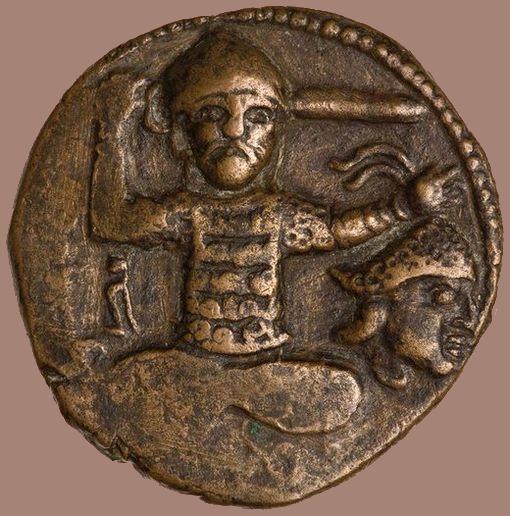|
|

Source: "The Zangid bridge of Ğazīrat ibn ʿUmar (ʿAyn Dīwār/Cizre): a New Look at the carved panel of an armoured horseman" by David Nicolle, in Bulletin d'études orientales 2014/1 (Tome LXII) pp. 223- 264
Referenced as figure 286 in The military technology of classical Islam by D Nicolle
286. Coin from Diyarbakr, late 12th-early 13th centuries AD, Artuqid. Bib. Nat., Paris.
p.175: A certain amount of confusion could surround mail. Its rings were widely referred to in Arabic as zard, zared or zird, which is a term very close to the sard scales of the dirʿ. There does, however, seem to have been a clear distinction between the two terms from the 10th to 14th centuries (see Terminology). The situation in Persian-speaking areas was simpler, for here the term zirih quite clearly referred to mail.43 The pictorial evidence, some of it very stylized and having to be interpreted with caution, shows that mail hauberks of various shapes, long (Figs.
330, 333, 335, 447, 501, 520, 537, 543, 600, and 639) or short (Figs. 134, 196, 246,
267, 292, 294, 305, 392, 515, 522, 541, 598 and 599), with long (Figs.161, 174, 241,
250, 270, 298, 305, 345, 346, 347, 348, 350, 375, 428, 435, 438,
442, 494, 500, 519, 535, 538, 540, 543, 545A-F and H, and 551B) or short sleeves (Figs. 262, 286, 288, 292, 339,
444, 446, 499, 521, 546A, 551, 601, 606, and 661), some opening down the front (Figs. 324F and 641) and others put on over the head (Figs. 157, 316, 377, 422,
517, and 549), were all used in most regions of Islam in most periods.44
43. Firdawsī, op. cit., pp. 368-369, 427 and 828.
44. Fries, op. cit., pp. 62-63; Anon., The Song of Roland, verse 79; Ibn Isḥag, op. cit., p. 107; Mutanabbi, in Wormhoudt, op. cit., p. 84; Norris, op. cit., pp. 95-96.
|
|

